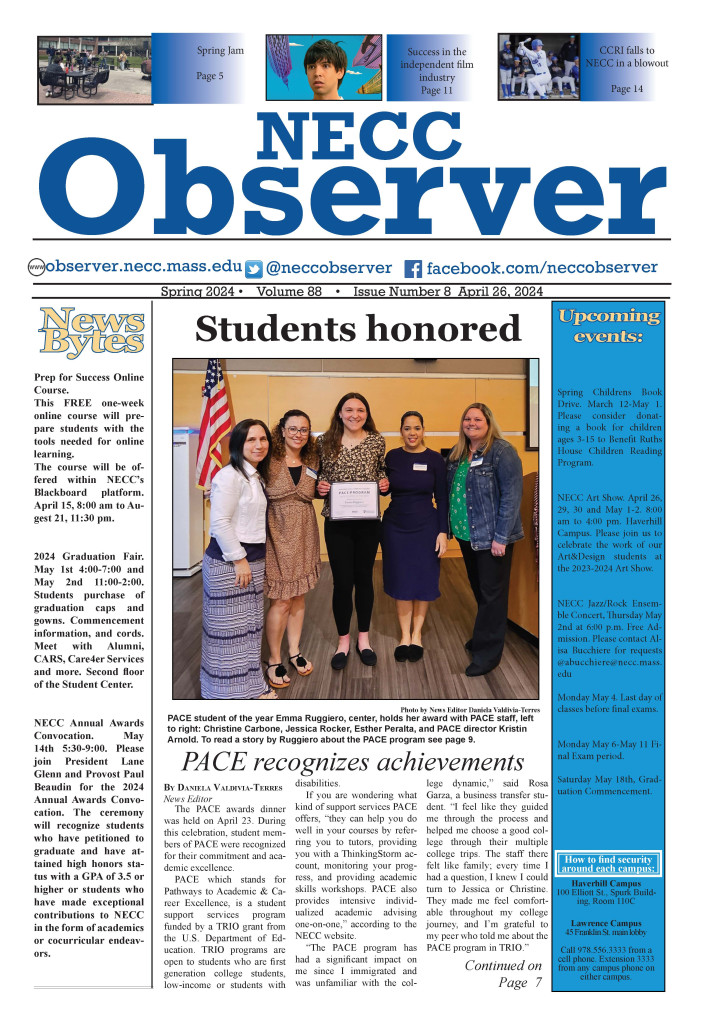In September, it was announced on NECC’s website that the Office of Student Life and the SOAR team would be hosting a Campus Wide Trick-or-Treat on All Hallow’s Eve, which has sparked excitement among students.
The event, hosted in both Haverhill and Lawrence, will include trick-or-treating throughout the campuses and offices as well as a virtual costume contest. Though it may not appear so at first, the festivities offered by Northern Essex Community College do resemble those that date back to the original traditions of Samhain.
Samhain is a pagan Festival that comes from the ancient Celtic spiritual tradition. Today, it is commonly observed from Oct. 31 to Nov. 1 to welcome in what celebrants called the “dark half of the year” and honor the time of harvest.
The ancient Celts also believed that the barriers between our physical world and the spirit world were the thinnest during this time of year, which allowed for closer interaction between ancestors and denizens of the Otherworld.
Given this, Samhain has been considered a time for gathering and connection within family and community. In its earliest days, Samhain consisted of celebrations of the Fire Festivals which included bonfires known as Samghnagans as well as carved turnips called jack-o’-lanterns; these appeared in the Middle Ages and were attached by strings to sticks and filled with coal.
Later on, with embedded Irish tradition, turnips were swapped out with pumpkins.
Another tradition of this time was “dumb supper.” In this celebration, great feasts were consumed by celebrants, but only after inviting ancestors to join it; this gave families a chance to interact with the spirits of their late relatives until they departed the physical world.
The children of the families would play games to entertain the dead, and adults would give updates on the news of the past year.
During the night, doors and windows were left open so that the dead could come in and eat the cakes that had been offered to them.
These ancient traditions eventually merged with our understanding of Halloween today, as 19th century Irish American immigrants brought their Traditions across the ocean. I
n fact, trick-or-treating was derived from old Scottish and Irish traditions known as “mumming.” This tradition consisted of putting on costumes, going door-to-door, and singing songs to the Dead; homemade cakes were commonly given to those who participated.
Samhain celebrants who did not take part in mumming would dress up as animals and monsters to ward away fairies. The “trick” aspect also originated from Samhain practices, though, old celebration tricks were typically blamed on fairies attached to the Celtic folklore.
When observing Samhain and other October celebrations, such as Diwali and Dias de Los Muertos, the ideas of family, friends, and community shine bright. With the upcoming campus festivities, we are again drawing on the traditions of community and connection.
This event not only reflects the original values of old Halloween, but also reminds us that it is not simply a commercial holiday primarily meant to be enjoyed by children, but a time for all to gather, no matter the age. It reminds us that this holiday is rooted deeply, and can be honored as such.
The event tables will be located in the second-floor lobby of the Student Center (SC) and the Dimitry (L) Building Atrium, respectively, on the Haverhill and Lawrence campuses. For more information, visit the “Events” page on the official NECC website (necc.mass.edu).

